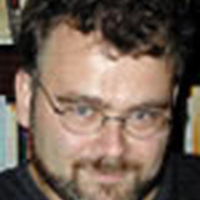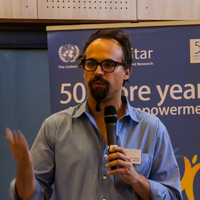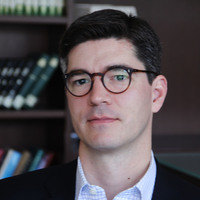
Sheyda Aisha Khaymaz
Dissertation Title: Indigenous Presentness: Translocal Politics of Amazigh Art and Resistance
Research interests: Social history of art; abstraction and text; African and diasporic modernisms; Amazigh art; art of the Sahara; Indigenous methodologies; language sovereignty; African anticolonial thought and praxis
Biography: Sheyda Aisha Khaymaz (they/she) is an artist, curator, poet, and PhD candidate in Art History with a specialization in modern and contemporary art from the north of Africa. Their doctoral dissertation, titled Indigenous Presentness: Translocal Politics of Amazigh Art and Resistance, focuses on the manifold expressions of indigeneity and Indigenous philosophies in art. It explores the nexus between Amazigh artistic expression and sovereignty movements across the Indigenous territories known as Tamazgha. Indigenous Presentness theorises the innovative artistic forms that emerged in the region after the 1960s, particularly sign- and script-based abstraction, a form deeply rooted in ancient practices like tattooing and rock-engraving, as a mode of decolonizing praxis. These artistic innovations are viewed through the lens of perpetual presence and an intrinsic relation to the present. The project also aims to connect modern-day instances of Tamazight language activism and Indigenous revival movements with a larger discourse on indigeneity and Africanity.
Khaymaz is the 2023 recipient of the Rhonda A. Saad Prize for Best Paper in Modern and Contemporary Arab Art, awarded by the Association for Modern and Contemporary Art of the Arab World, Iran, and Turkey (AMCA) for their paper titled “To Twist a Historical Knot: Projects of Pan-Arabism, Hurufiyya, and Amazighism." In 2022, they were awarded the Mark Tessler Graduate Student Prize Award by the American Institute for Maghrib Studies (AIMS) for the paper titled “Phantom Images, Residual Violences: An Unlooking and Untelling of Marc Garanger’s Femmes algériennes 1960."
Khaymaz is a founding member of the curatorial collective and independent press, Lungs Project, which has been operating since 2016 between the UK and the USA, promoting a cross-disciplinary dialogue amongst early-career artists and writers. They are the co-editor and publisher of New Landscapes Anthology, a collection of emerging poetry by QTBIPOC poets, which released in 2019.
Supervisors: Dr Eddie Chambers
Research interests: Social history of art; abstraction and text; African and diasporic modernisms; Amazigh art; art of the Sahara; Indigenous methodologies; language sovereignty; African anticolonial thought and praxis
Biography: Sheyda Aisha Khaymaz (they/she) is an artist, curator, poet, and PhD candidate in Art History with a specialization in modern and contemporary art from the north of Africa. Their doctoral dissertation, titled Indigenous Presentness: Translocal Politics of Amazigh Art and Resistance, focuses on the manifold expressions of indigeneity and Indigenous philosophies in art. It explores the nexus between Amazigh artistic expression and sovereignty movements across the Indigenous territories known as Tamazgha. Indigenous Presentness theorises the innovative artistic forms that emerged in the region after the 1960s, particularly sign- and script-based abstraction, a form deeply rooted in ancient practices like tattooing and rock-engraving, as a mode of decolonizing praxis. These artistic innovations are viewed through the lens of perpetual presence and an intrinsic relation to the present. The project also aims to connect modern-day instances of Tamazight language activism and Indigenous revival movements with a larger discourse on indigeneity and Africanity.
Khaymaz is the 2023 recipient of the Rhonda A. Saad Prize for Best Paper in Modern and Contemporary Arab Art, awarded by the Association for Modern and Contemporary Art of the Arab World, Iran, and Turkey (AMCA) for their paper titled “To Twist a Historical Knot: Projects of Pan-Arabism, Hurufiyya, and Amazighism." In 2022, they were awarded the Mark Tessler Graduate Student Prize Award by the American Institute for Maghrib Studies (AIMS) for the paper titled “Phantom Images, Residual Violences: An Unlooking and Untelling of Marc Garanger’s Femmes algériennes 1960."
Khaymaz is a founding member of the curatorial collective and independent press, Lungs Project, which has been operating since 2016 between the UK and the USA, promoting a cross-disciplinary dialogue amongst early-career artists and writers. They are the co-editor and publisher of New Landscapes Anthology, a collection of emerging poetry by QTBIPOC poets, which released in 2019.
Supervisors: Dr Eddie Chambers
less
Related Authors
Wendy Wilson-Fall
Lafayette College
Stephennie Mulder
The University of Texas at Austin
Glenn Peers
The University of Texas at Austin
Benjamin Isakhan
Deakin University
Matteo Salvadore
American University of Sharjah
Franco Barchiesi
Ohio State University
Kyle Whyte
University of Michigan
Warren Woodfin
Queens College of the City University of New York
Mario Blaser
Memorial University of Newfoundland
Lewis Borck
University of Oklahoma










Uploads
Conference Presentations by Sheyda Aisha Khaymaz
The Neolithic rock art of Tassili n’Ajjer forms the foundation of this paper, wherein I focus on the chronicles of its so-called discovery. Prior to its designation as a National Park in 1972 by the postcolonial government in Algeria, this region has been the target of numerous expeditions, each of which has set out to discover and document its much-talked-about petroglyphs. The original “discoverer” of the Tassili frescoes has been a topic of debate in Western archaeological circles for quite some time. The epithet has been attributed, among others, to Lieutenant Brenans, a French Foreign Legion camel corps officer who is said to have found them in 1933, and French archaeologist Henri Lhote, who made a similar claim in 1956. These petroglyphs may have seemed like a lost treasure to outsiders, but the Kel Tamasheq people of the Sahel-Sahara considered them an intrinsic part of local, quotidian knowledge and life in the desert.
What constitutes acceptable and ethical research methods is the central question of this study. Has any explorer ever set foot on Indigenous soil without unintentionally or intentionally introducing some form of devastation? Indeed, as the paper details, a disturbing tableau of destruction, despoilment, disenfranchisement, and cultural erasure emerges from the research histories surrounding Tassilian art. By addressing the researchers’ moral dilemmas, this study seeks to contribute to the wider conversation about responsible research methods and the deleterious consequences of scholarly endeavors in geographies developmentally marginalized by colonial enterprise.
By examining the works of artists such as Madiha Umar, Shakir Hassan Al Said from the One Dimension Group, Farid Belkahia from the Casablanca School, and Choukri Mesli from the Aouchem Group, this paper underscores the distinguishable contributions of these artists to the broader canon of aesthetic modernism. Furthermore, it emphasises that these artists provide us scholars with a mode of analysis distinct from European abstract painting, ultimately demonstrating greater workability.
Hawad, a renowned Tuareg poet and visual artist of the Aïr region, now an émigré in France, becomes a central figure in navigating this terrain. Hawad’s literary oeuvre, although portrays the Sahara as a void, paints it not as an uninhabited wasteland but as a dynamic entity in Tuareg ontology—reflective of a deeply rooted relational philosophy. In Hawad’s writings, this perceived emptiness is wrought by complex ties to the collective body and selfhood, rendering the desert an actor in the continuum of kinship, potentiality, and futurity.
In stark juxtaposition, the French colonial gaze distinguishes this emptiness as terra nullius—a blank canvas awaiting the civilizing imprint. While the French exercised a “settler” type of colonialism in metropolitan hubs like Algiers, their approach to the Sahara was notably divergent. Driven by visions of a “French Sahara,” the desert was methodically marginalized, deterritorialized, and commodified. Beyond mere territorial dominance, however, this conceptualization aimed at resource extraction. The Sahara, denuded of its inherent essence and cultural resonance, was repositioned as a mineable asset. This commodification, which manifested through, among other things, mapped-out mining zones and rapacious nuclear experimentations, profoundly disrupted Tuaregs’ foundational relation to land.
Through an analysis of these viewpoints, this investigation amplifies the tension rooted in spatial conceptualizations, particularly those molded by colonial imagination. Central to this discourse is an affirmation of Indigenous epistemologies, urging a reevaluation of what is deemed “empty” and the socio-political forces that shape such designations.
Drawing primarily on Frantz Fanon, this paper analyses the mechanisms by which the city of Algiers had come to be wholly bifurcated by the 1950s and how urban architecture served as a tool that reified antagonistic colonial power relations. In a similar vein, historian Patrick Wolfe wrote about settler colonialism as a (permanent) structure, as opposed to an event. For Wolfe, settler colonialism remains impervious to regime change, and even after independence, the structures installed by the coloniser continue to function. I similarly consider the notion of permanency, both that of colonialism and urban architecture, to elucidate the role of the built environment in establishing an antithetical order of coloniser versus colonised. I demonstrate that the seeds of difference sowed by the French architectural urban policies continue to propagate tension in the twenty first century. The ongoing misrecognition of the Amazigh communities’ demand for linguistic sovereignty, as the paper details, attests to the military power that is still visibly concentrated on Algeria and to the power relations that remain lopsided since the colonial era.
Furthermore, this text draws on the impossibility of the English language in enunciating collective grief and anguish, whilst aiming to create a method of writing about the unwritable towards a reclamation of humanity. Although Garanger's work is referenced throughout, following Saidiya Hartman’s footsteps, this paper refuses to reproduce his photographs; it instead strives to generate a method for writing that will confront the scholastic processes that sometimes play an unsuspecting, at others a complicit role in the normalization and casualization of violent encounters. The result, therefore, is a method presented in two acts: an experiment in process, poetry, and lamentation.
Drafts by Sheyda Aisha Khaymaz
Papers by Sheyda Aisha Khaymaz
The Neolithic rock art of Tassili n’Ajjer forms the foundation of this paper, wherein I focus on the chronicles of its so-called discovery. Prior to its designation as a National Park in 1972 by the postcolonial government in Algeria, this region has been the target of numerous expeditions, each of which has set out to discover and document its much-talked-about petroglyphs. The original “discoverer” of the Tassili frescoes has been a topic of debate in Western archaeological circles for quite some time. The epithet has been attributed, among others, to Lieutenant Brenans, a French Foreign Legion camel corps officer who is said to have found them in 1933, and French archaeologist Henri Lhote, who made a similar claim in 1956. These petroglyphs may have seemed like a lost treasure to outsiders, but the Kel Tamasheq people of the Sahel-Sahara considered them an intrinsic part of local, quotidian knowledge and life in the desert.
What constitutes acceptable and ethical research methods is the central question of this study. Has any explorer ever set foot on Indigenous soil without unintentionally or intentionally introducing some form of devastation? Indeed, as the paper details, a disturbing tableau of destruction, despoilment, disenfranchisement, and cultural erasure emerges from the research histories surrounding Tassilian art. By addressing the researchers’ moral dilemmas, this study seeks to contribute to the wider conversation about responsible research methods and the deleterious consequences of scholarly endeavors in geographies developmentally marginalized by colonial enterprise.
By examining the works of artists such as Madiha Umar, Shakir Hassan Al Said from the One Dimension Group, Farid Belkahia from the Casablanca School, and Choukri Mesli from the Aouchem Group, this paper underscores the distinguishable contributions of these artists to the broader canon of aesthetic modernism. Furthermore, it emphasises that these artists provide us scholars with a mode of analysis distinct from European abstract painting, ultimately demonstrating greater workability.
Hawad, a renowned Tuareg poet and visual artist of the Aïr region, now an émigré in France, becomes a central figure in navigating this terrain. Hawad’s literary oeuvre, although portrays the Sahara as a void, paints it not as an uninhabited wasteland but as a dynamic entity in Tuareg ontology—reflective of a deeply rooted relational philosophy. In Hawad’s writings, this perceived emptiness is wrought by complex ties to the collective body and selfhood, rendering the desert an actor in the continuum of kinship, potentiality, and futurity.
In stark juxtaposition, the French colonial gaze distinguishes this emptiness as terra nullius—a blank canvas awaiting the civilizing imprint. While the French exercised a “settler” type of colonialism in metropolitan hubs like Algiers, their approach to the Sahara was notably divergent. Driven by visions of a “French Sahara,” the desert was methodically marginalized, deterritorialized, and commodified. Beyond mere territorial dominance, however, this conceptualization aimed at resource extraction. The Sahara, denuded of its inherent essence and cultural resonance, was repositioned as a mineable asset. This commodification, which manifested through, among other things, mapped-out mining zones and rapacious nuclear experimentations, profoundly disrupted Tuaregs’ foundational relation to land.
Through an analysis of these viewpoints, this investigation amplifies the tension rooted in spatial conceptualizations, particularly those molded by colonial imagination. Central to this discourse is an affirmation of Indigenous epistemologies, urging a reevaluation of what is deemed “empty” and the socio-political forces that shape such designations.
Drawing primarily on Frantz Fanon, this paper analyses the mechanisms by which the city of Algiers had come to be wholly bifurcated by the 1950s and how urban architecture served as a tool that reified antagonistic colonial power relations. In a similar vein, historian Patrick Wolfe wrote about settler colonialism as a (permanent) structure, as opposed to an event. For Wolfe, settler colonialism remains impervious to regime change, and even after independence, the structures installed by the coloniser continue to function. I similarly consider the notion of permanency, both that of colonialism and urban architecture, to elucidate the role of the built environment in establishing an antithetical order of coloniser versus colonised. I demonstrate that the seeds of difference sowed by the French architectural urban policies continue to propagate tension in the twenty first century. The ongoing misrecognition of the Amazigh communities’ demand for linguistic sovereignty, as the paper details, attests to the military power that is still visibly concentrated on Algeria and to the power relations that remain lopsided since the colonial era.
Furthermore, this text draws on the impossibility of the English language in enunciating collective grief and anguish, whilst aiming to create a method of writing about the unwritable towards a reclamation of humanity. Although Garanger's work is referenced throughout, following Saidiya Hartman’s footsteps, this paper refuses to reproduce his photographs; it instead strives to generate a method for writing that will confront the scholastic processes that sometimes play an unsuspecting, at others a complicit role in the normalization and casualization of violent encounters. The result, therefore, is a method presented in two acts: an experiment in process, poetry, and lamentation.